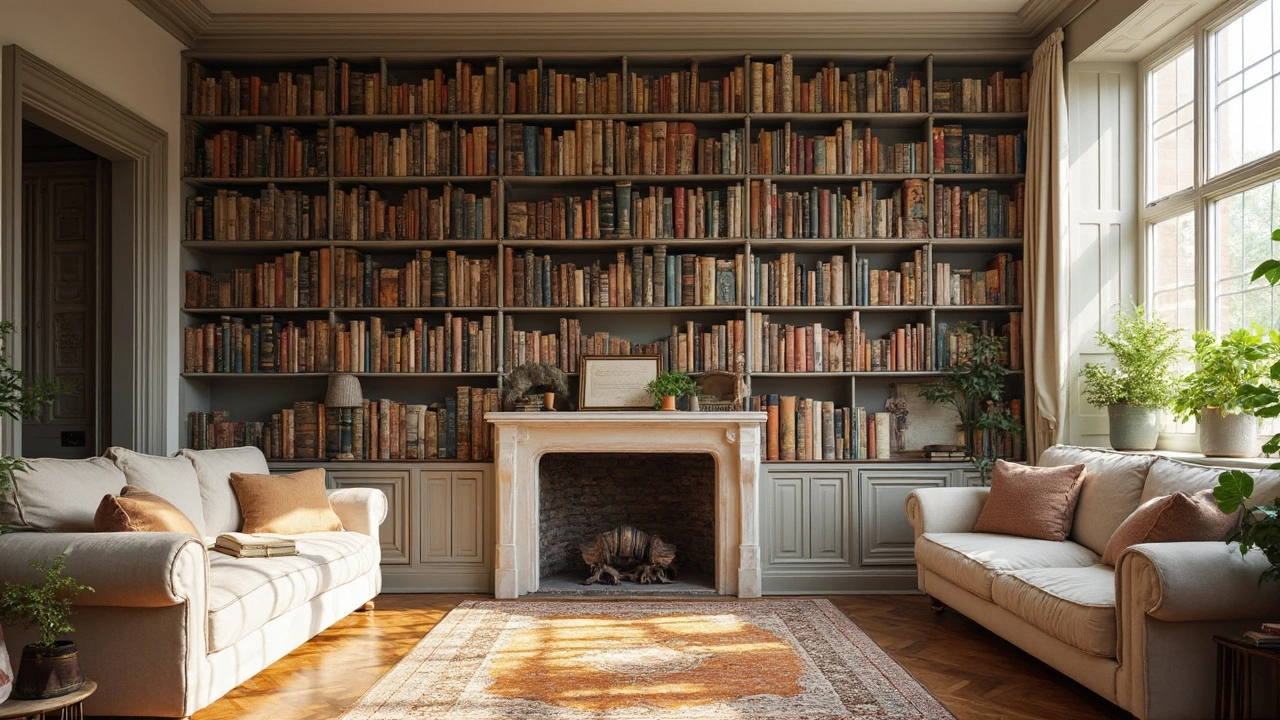Bookshelf Tips – How to Style, Organize & Place Your Bookcases
Bookshelves are more than storage; they’re a chance to show off personality and keep life tidy. Whether you have a tiny bedroom corner or a sprawling living room wall, the right approach can turn a plain shelf into a focal point. Below are simple rules that work for any style, plus placement tricks that maximize space without looking forced.
Key Rules for Styling Your Shelves
First, treat height like a visual rhythm. Start with larger items on the bottom, medium pieces in the middle, and smaller accessories at the top. This ladder effect draws the eye upward and prevents the shelf from feeling top‑heavy.
Second, mix types of objects. A row of books looks better when broken up with a vase, a framed photo, or a small sculpture. Aim for a 60‑30‑10 split: 60% books, 30% décor, 10% personal items. That ratio keeps the shelf functional while adding visual interest.Third, play with color. Choose a few accent hues that echo other rooms and repeat them on the shelf. For example, a cobalt vase can echo a sofa pillow, tying the space together.
Fourth, mind spacing. Leave a little breathing room between each object; crowded shelves feel chaotic. If a book’s spine looks crowded, tilt it slightly or stack it horizontally to create gaps.
Lastly, don’t forget the back panel. A painted or wallpapered back can add depth. A light pastel or subtle pattern makes the shelf pop without overwhelming the items.
Smart Placement Ideas
In a small bedroom, the best spot is often an unused wall above the dresser or beside the bed. Opt for a narrow, tall bookcase that reaches close to the ceiling – this adds storage while keeping floor space clear.
If you have an open‑plan living area, try a floating shelf at eye level behind the sofa. It creates a mini library and frees up floor space for a coffee table.
For narrow hallways, place a slim vertical shelf on one side. Add a lamp on top for a reading nook that feels intentional, not cramped.
When the room gets a lot of traffic, keep the lower shelf clear of heavy items. Use the bottom for baskets or bins that hide clutter, and reserve the middle and top shelves for display pieces.
One quick trick is to use the shelf as a room divider. A tall, open‑back bookcase lets light pass through while still defining separate zones, perfect for studio apartments.
Remember to anchor taller bookcases to the wall, especially in homes with kids or pets. A simple bracket hidden behind the back panel keeps the unit stable and safe.
Putting a rug underneath a low bookcase can anchor the look, especially in living rooms. Choose a rug that’s a shade lighter than the floor for contrast without clashing.
Finally, test the layout before you commit. Lay books and décor on the floor in the intended arrangement, snap a photo, then adjust as needed. This trial run saves time and prevents a shelf that feels off‑balance.
With these tips, your bookshelves will do more than hold books – they’ll showcase style, keep things organized, and make any room feel thoughtfully designed.
Floor to Ceiling Bookshelves Cost: What to Expect Before You Build
Ever dreamt of turning your wall into a giant bookshelf? Discover the real costs behind floor-to-ceiling bookshelves, plus what actually drives prices up (or down). You'll learn about DIY options versus pro installs, how materials change your budget, and key tips to stretch every dollar. This guide makes the bookshelf planning process a whole lot less intimidating. Make more space for your books—and your wallet.
More
